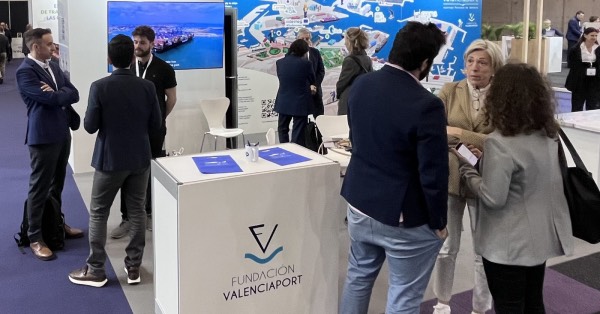The Port Authority of Valencia has presented at Eco Mobility Expo its projects to become an emission-neutral port in 2030: railways, electrification of the docks or the use of fuels such as hydrogen.
The PAV is earmarking more than 131 million euros of public investment in decarbonisation projects with the strategic objective of becoming an emission neutral port by 2030.
The services, connectivity and infrastructures of Valenciaport facilitate the attraction of industrial projects to the Valencian Region
The Port Authority of Valencia has presented its strategy Valenciaport 2030, zero emissions in the framework of the Eco Mobility Expo. Decarbonisation, digital transformation and sustainable mobility are three priority objectives on which the Valencian precinct is working with projects and actions that are reflected in the day-to-day life of the port community. The aim is to establish itself as the green, intelligent and innovative hub of the Mediterranean, at the service of the companies in its area of influence as an ally of Spanish economic activity and a pole of attraction for talent and facilitator of investment in industrial projects in the Valencian Community.
Raúl Cascajo, head of Environmental Policies of the PAV; Eva Pérez, director of Innovation Promotion of the Valenciaport Foundation; or Salvador Furió, director of Innovation and Development of the Cluster of the Valenciaport Foundation; have participated in round tables on Smart ports, digital transformation in logistics, mobility in port transport, artificial intelligence or environmental sustainability.
The APV and the Valenciaport Foundation share a stand at the Eco Mobility Expo where they show the decarbonisation projects they are carrying out and for which they are investing more than 131 million euros. Initiatives such as the three photovoltaic plants already approved, the H2Ports project with the first operational hydrogen plant in a European port area or the two electrical substations planned so that ships calling at Valencia can be plugged into the electricity grid. A commitment to mobility that also includes the replacement of the PAV’s fleet of vehicles with hybrid and electric vehicles, or projects related to improving energy efficiency.
Moreover, Valenciaport is boosting the construction and improvement of railway connections with an investment of 240 million Euro in the coming years. The aim is to increase the weight of the railway in the movement of goods. Already in 2022, the weekly average of trains operating in the Port of Valencia was 90 compared to 80 in 2021. A trend that continues to increase in these first months of this year with weeks with 99 trains.
Artificial intelligence and environmental sustainability
During the Valenciaport presentations, strategic projects of the PAV to promote sustainable development and improve emissions from ports and ships through innovative solutions were explained. Eva Pérez highlighted the Green C Ports initiative, which has expanded the existing network of environmental and meteorological sensors, connecting them to a port environmental platform where the data obtained will be modelled using artificial intelligence algorithms that will allow internal users or port customers, among others, to be informed about different key environmental parameters related to air quality and noise derived from port activities.
This initiative also measures the carbon footprint in real time in a project that also involves carriers and the shipping company Beleària, through sensor networks and other sources of information, making it possible to obtain reliable predictions using predictive analysis and artificial intelligence tools.









































